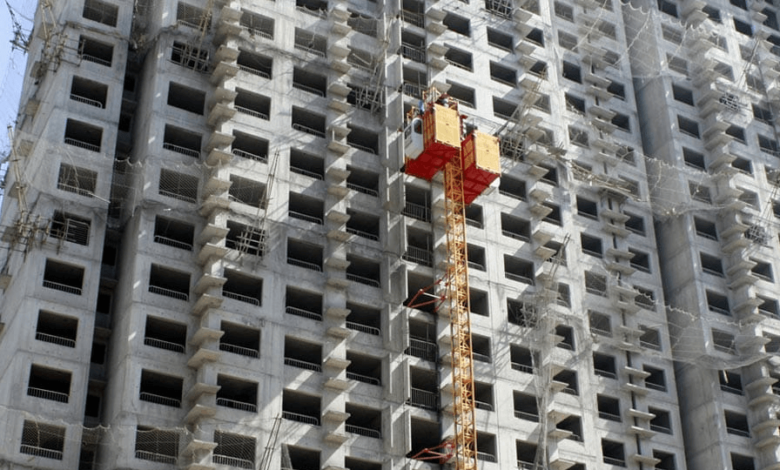Construction Hoists: Lifting the Construction Industry to New Heights

In the world of modern construction, where towering skyscrapers and expansive bridges are the norm, the efficiency of vertical transportation is crucial. Construction hoists have emerged as essential machines that elevate not only materials and workers but also the productivity, safety, and timeline of building projects. Their presence on construction sites worldwide underscores their value and the engineering brilliance behind them. This article provides a comprehensive exploration of construction hoists—what they are, how they function, their types, innovations, benefits, and how they are reshaping the future of the construction industry.
What Are Construction Hoists?
A construction hoist is a mechanical lifting system used on construction sites to vertically transport people, tools, and materials between the ground and upper levels of a building. These machines are particularly vital in high-rise construction where manual transportation would be time-consuming, inefficient, and hazardous.
Unlike cranes, which primarily lift from the outside and above, construction hoists are often installed alongside the structure and provide direct vertical movement using a fixed track and cabin system.
See also: What SVOD Means for Consumers and Content Providers
Types of Construction Hoists
There are several types of construction hoists designed to meet different project needs. Let’s explore the most common types:
1. Passenger and Material Hoists
These are dual-purpose hoists capable of carrying both workers and construction materials. They are equipped with safety features like emergency brakes and overload sensors, ensuring the secure transport of personnel.
2. Material-Only Hoists
These are designed specifically for transporting building materials such as cement bags, scaffolding parts, steel bars, and wooden planks. They are usually simpler in design and don’t include safety features required for human transport.
3. Rack and Pinion Hoists
These use a mechanical gear system to move the hoist cabin up and down a vertical mast. They offer high load capacity, reliability, and are easy to install and dismantle.
4. Wire Rope Hoists
These hoists operate with a cable drum system and are used for lifting lighter materials. While they are less common on modern high-rise projects, they are still useful in small to mid-sized construction efforts.
Key Benefits of Using Construction Hoists
1. Increased Efficiency
Construction hoists drastically reduce the time it takes to move materials and people from one floor to another. This speeds up construction timelines and improves overall productivity.
2. Improved Safety
Carrying heavy or hazardous materials manually is dangerous. Construction hoists reduce the need for such labor, minimizing injuries and safety incidents on-site.
3. Cost Savings
Although an initial investment is required, hoists lead to significant savings in labor costs and time. Reduced project duration often offsets the cost of the hoist system.
4. Adaptability
Construction hoists are modular. As a construction hoists building grows taller, additional mast sections can be added to extend the hoist’s height. This adaptability makes them perfect for projects of varying scales.
Innovations in Construction Hoist Technology
The last two decades have seen rapid advancements in hoist technology. Today’s construction hoists are not just basic lift mechanisms—they’re smart, safe, and energy-efficient.
IoT Integration
Some modern hoists are equipped with sensors and IoT devices that provide real-time performance monitoring, maintenance alerts, and usage data. This helps operators anticipate failures and manage energy consumption.
Remote Diagnostics
Manufacturers now offer remote diagnostic services, allowing engineers to assess issues and offer solutions without being physically present on the job site.
Regenerative Braking
Many hoists now use regenerative braking systems, which convert kinetic energy into electrical energy when descending. This energy can be fed back into the power grid, reducing energy usage.
Modular Designs
Contemporary hoists are designed to be modular and easy to transport. They can be assembled or dismantled rapidly, allowing construction teams to shift resources as projects evolve.
Construction Hoists Around the World
Construction hoists are found in virtually every urban construction project globally. From the booming high-rises in Dubai to infrastructure projects in New York, from industrial plants in India to mega-housing developments in Africa, hoists are integral.
The market is served by leading manufacturers from various regions:
- Europe: Alimak (Sweden), GEDA (Germany)
- Asia: ZOOMLION, GJJ, SCZ Machinery (China)
- North America: Champion Elevator, Beta Max
These companies provide customized hoist systems based on load capacity, height, weather conditions, and safety regulations.
Safety Protocols and Regulatory Standards
The use of construction hoists is governed by strict safety standards globally. Depending on the country, these regulations may vary but often cover:
- Emergency brake systems
- Overload protection
- Fall arrest mechanisms
- Regular inspections and certifications
- Operator training requirements
International standards include:
- EN 12159 (Europe)
- ANSI A10.4 (United States)
- ISO 9001 for quality management
Manufacturers and operators alike must stay updated with these standards to avoid costly violations and ensure worker safety.
Environmental Considerations
As sustainability becomes central to construction, manufacturers are also building greener hoists. Here’s how:
- Energy-efficient motors
- Recyclable materials for hoist cabins
- Low-noise technology
- Solar-compatible charging options
Some companies now offer electric hoists that run on renewable energy sources, aligning with green building initiatives.
Buying or Renting Construction Hoists: Which Is Better?
The choice between purchasing and leasing depends on the project size and frequency of hoist use.
Buying is ideal when:
- The construction company has multiple projects lined up.
- Customization and long-term usage are needed.
- The budget allows for upfront investment.
Conclusion
From lifting the load to elevating efficiency, construction hoists are at the core of building our cities upward. They reduce the physical strain of transporting materials, improve worker safety, speed up timelines, and now—thanks to innovation—help reduce carbon footprints. Whether it’s a towering commercial structure or a residential high-rise, these machines prove indispensable.
As we look to a future filled with smarter, taller, and greener cities, construction hoists will remain a foundational tool, proving that sometimes, the way forward is straight up.
Would you like this article formatted for blog posting or turned into a downloadable PDF?




